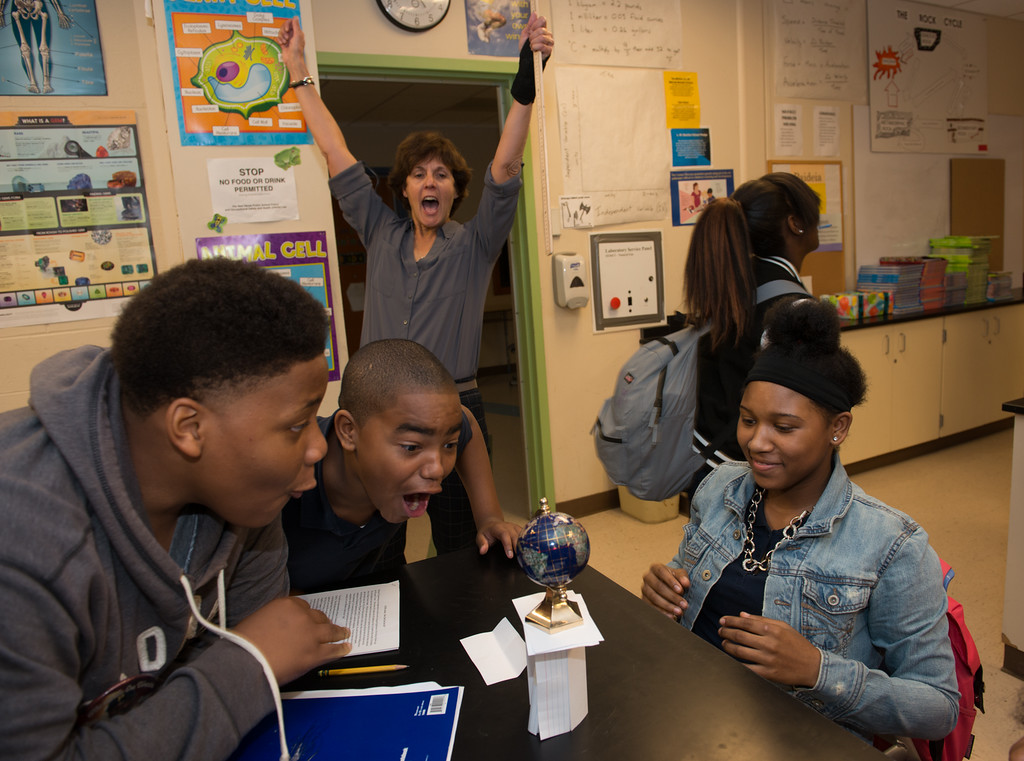Catherine Koehler and her science education students have “adopted” a New Haven middle school – an effort that enables Southern to help bolster local STEM education, while also providing the university’s future teachers with valuable classroom training.
Each week, students in Koehler’s Secondary Science Methods course visit the Beecher Magnet Museum Middle School to assist with an after-school program called the Beecher Future Scientists Club. The middle school kids participate in various science projects, such as those exploring static electricity, pulling DNA from strawberries and building towers with cards.
On a rotating basis, one SCSU student develops and teaches a lesson each week. The other university students work with small groups of students to assist with the lesson.
Kaitlin LaFrance, a graduate student who was one of the participants during the fall semester, said the Beecher students have really responded. “The kids will ask us questions about science,” she said. “But because we are there every week and we have developed a solid relationship with them, they aren’t afraid to ask us questions about school, in general, or even about life.”
LaFrance added that while middle school students can be rambunctious, it makes this program even more rewarding. “They are at a fun age and you can still help mold them.”
Koehler said that SCSU students also benefit from the program because of the hands-on, classroom experience. It is above and beyond the student-teaching requirements of the program.
“It’s a supervised, clinical experience, which is one of the criteria our teaching program is evaluated on during the accreditation process,” she said. “Our students are getting considerable feedback from the classroom teacher (alumnus Michael Kuszpa) and me before they start their student-teaching.”
She said the partnership with Beecher – now in its third year – has been mutually beneficial. “Our students are loving it, and their students are loving it.”
In fact, she said that some students – who were not apt to teach at the middle school level – now say they would consider it after graduating. LaFrance is one such student.
“I’m hoping to become a high school biology teacher, but I’m not opposed to teaching science at the seventh- and eighth-grade level,” LaFrance said.
The partnership is one of many between SCSU and area school systems, especially involving New Haven.
Susan Cusato, chairwoman of the Science Education and Environmental Studies Department, said the partnership is an example of how Southern is a leader in the STEM fields.
“This opportunity for young people to be engaged in hands-on learning in science is critical for establishing a solid base for understanding principles and processes in science,” Cusato said. “The integration of engineering concepts and activities provides students with the chance to apply what they have learned. I believe this makes science exciting and rewarding for students.”
Kuszpa said the program has been beneficial for his students, as well as the Southern students. “My students get exciting lessons by motivated, soon-to-be science teachers while raising their understanding of scientific concepts and grades on both district and state assessments,” he said. “SCSU students are exposed to teaching in an urban, racially diverse middle school classroom, a type of classroom that usually has the most teacher vacancies.”


